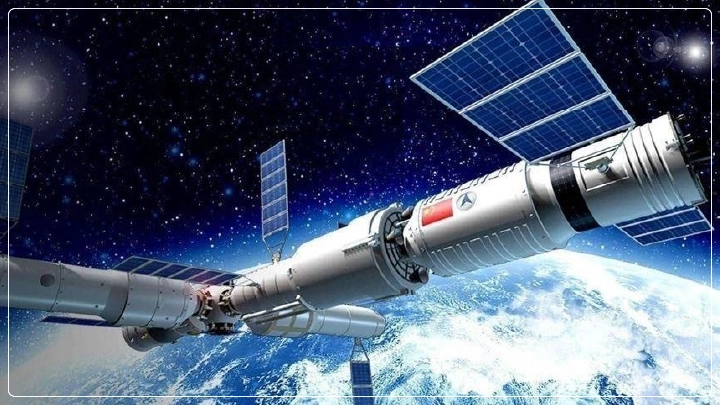March 2025
The astronauts of China's Shenzhou-19 have carried out the first in-orbit demonstration of artificial photosynthesis technology to produce oxygen and components for rocket fuel. In the process, they conducted twelve experiments with semiconductor catalysts to convert carbon dioxide and water into oxygen and hydrocarbon ethylene, which has been identified as an important ingredient in rocket fuel. This milestone is an important development for the Chinese space program and supports the feasibility of long-lasting missions into space. This technology aims to mimic the natural photosynthetic process of green plants but relies on engineered physical and chemical reactions. The crew of Shenzhou-19 used real-time detection techniques to monitor the conversion of carbon dioxide at room temperature, including gas transport and separation in microgravity.

Adjustments to the catalyst may allow for further development of this technology in generating additional fuels for spacecraft, such as methane or ethylene, to be used either for propulsion or life-support systems. This achievement represents a big leap toward sustainable deep-space exploration in China, possibly even for a crewed moon landing before 2030.
In contrast to consuming valuable energy only to generate oxygen through electrolysis, artificial photosynthesis presents viable alternatives for space stations regarding oxygen generation. The method of artificial photosynthesis newly developed in China would, on the one hand, minimize energy consumption while still yielding life-support elements. On the other hand, this is a giant leap on the way toward sustainable space travel. Traditional methods that suck up a lot of energy, like electrolysis, would not be practical for such long missions. While experiments on the ISS in recent years have primarily focused on understanding the effect of microgravity on natural photosynthesis and plant growth because of upcoming space agriculture, the program from China shows that the direct production of oxygen and components for rocket fuel could come from systems other than plants. This will allow pathways toward sustainability for much deeper space travel.
Artificial photosynthesis, a pioneering technology, has been demonstrated in space, but the onus remains on its successful inclusion in long-duration missions. Areas that need particular attention for further studies focus on scalability, efficiency optimization, and long-term stability. Future space missions including Tiangong will be used for testing to improve and adapt the technology into practical applications for future spacecraft and planetary bases.
The Chinese space program makes great progress toward lunar exploration, deep-space travel, and a permanent human presence in space beyond other nations. The artificial photosynthesis breakthrough is hence articulated as part of China's endeavor toward self-sufficiency in space. This technology means that astronauts will be able to convert materials that are in some way available in confined space environments or extraterrestrial atmospheres for producing life-support materials in able to allow for the extended conduct of space missions on lunar and Martian colonization and deep-space exploration.
Before 2030, China hopes to send humans to the Moon and establish a lunar research station. The success of artificial photosynthesis aboard the Tiangong space station represents a breakthrough in space technology with long-term applications. As China pushes the boundaries of space exploration, the potential applications of artificial photosynthesis may redefine how astronauts sustain themselves deep in space, making human habitation on the Moon and beyond more likely than ever.
March 2025
March 2025
March 2025
March 2025